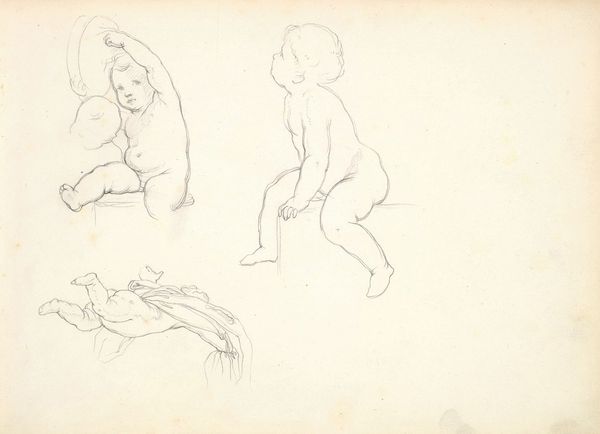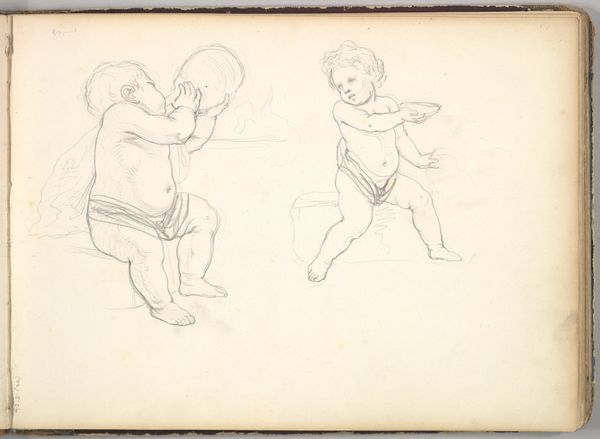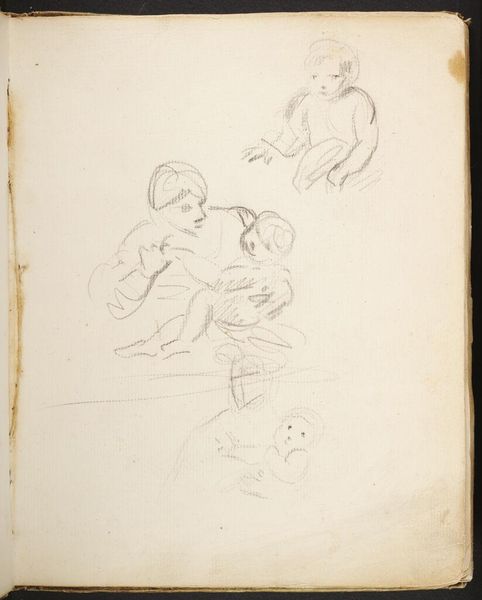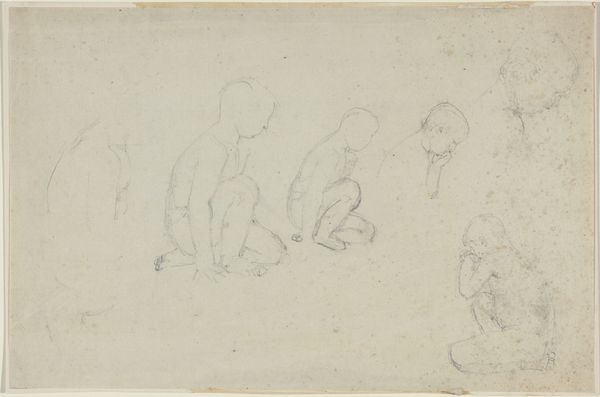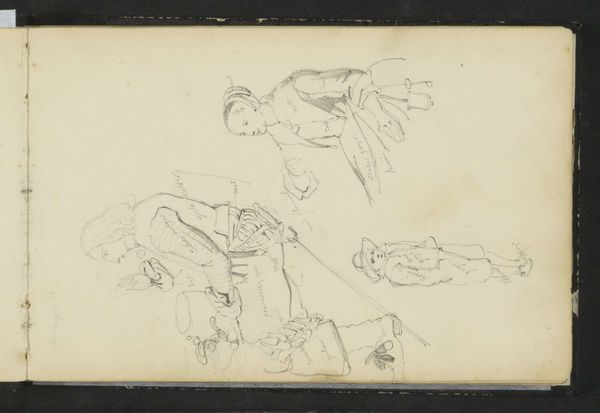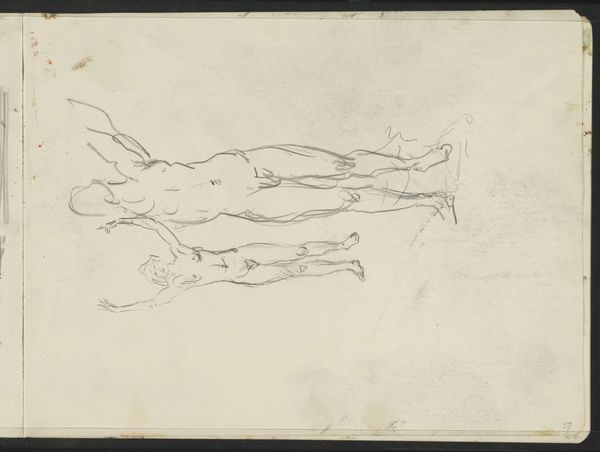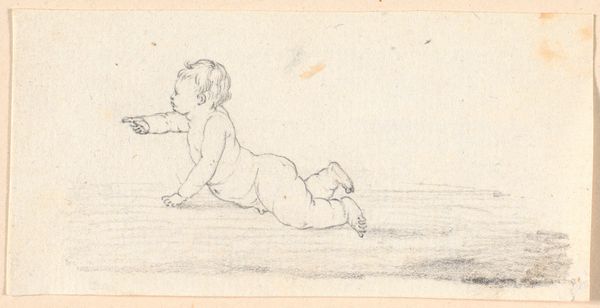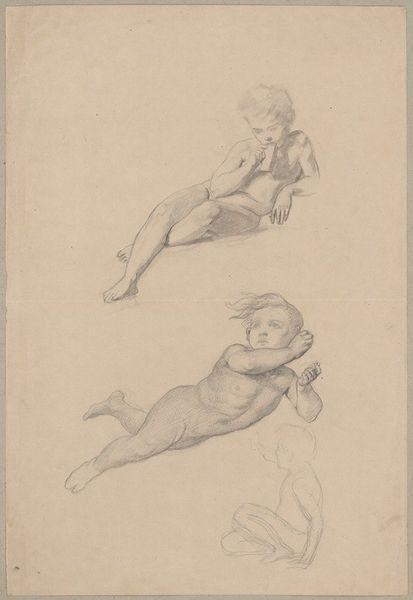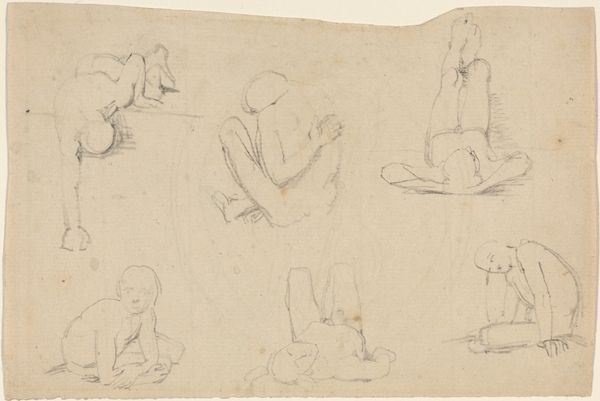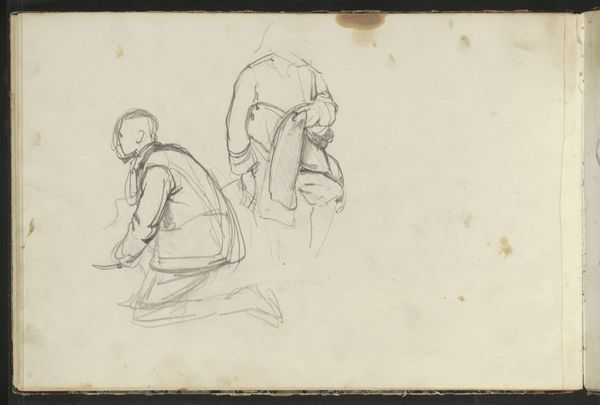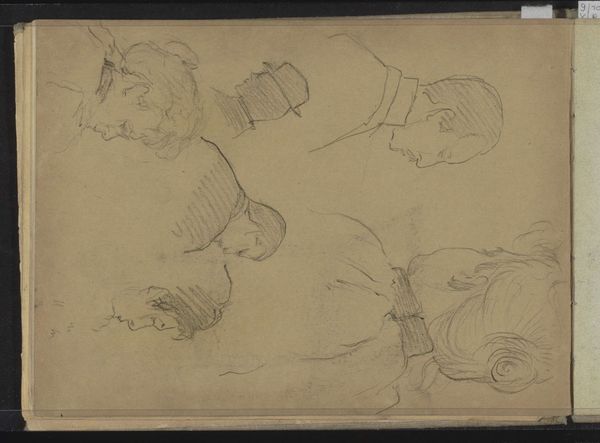
Three Children (in Sketch Book With Drawings on Twenty-six Leaves) 1844 - 1854
0:00
0:00
drawing, print, pencil
#
portrait
#
drawing
# print
#
figuration
#
pencil
Dimensions: Sheet (page): 7 7/8 x 10 7/8 in. (20 x 27.6 cm)
Copyright: Public Domain
Curator: This delicate sketchbook page holds three studies of children, rendered in pencil by Frederic Leighton sometime between 1844 and 1854. What catches your eye first? Editor: There's a wistful vulnerability in the linework. They almost float on the page. Childhood as an ethereal state, perhaps, distanced from the concerns of Victorian society. Curator: Leighton's handling of the pencil creates a luminous quality, yes. Look at the confident yet tender way he captures their plump limbs. The top-left child, playfully lifting what appears to be a toy, embodies dynamic movement. Then compare that with the solemn seated child. It all speaks to observation and skill. Editor: Skill certainly isn't the question here. But these children seem stripped of context, almost de-humanized in their idealized form. As studies of childhood innocence, these seem blind to Victorian realities where child labor and class divisions deeply impacted children’s lived experience. Do these figures act as diversions or intentional omissions? Curator: Perhaps. Or maybe Leighton was more focused on formal elements here - line, tone, and form - than a social commentary. Notice how each pose offers a study in perspective and light, testing classical ideals that can even be compared to ancient depictions of putti or cherubs. Editor: That focus on classical form could itself be a commentary of sorts - or even a political project that harkens to the Enlightenment's privileging of antiquity. It can imply a very specific and gendered type of human to emulate that may marginalize diverse, non-dominant bodies. Are we sure these aren't idealized subjects that only indirectly reference real children? Curator: The nature of drawing and studies often extracts from real life to then return through another, transformed. In the way these subjects float, in their arrangement across the page, perhaps they take on the qualities of an artistic meditation on potential and beauty. Editor: Maybe. But I keep circling back to what *isn't* depicted - what’s just outside the frame of Leighton’s gaze. The drawing then exists as a complex layering of what it offers alongside what it carefully neglects. Curator: In either case, it remains a fine display of technique, one to appreciate for its artful design. Editor: Indeed, it gives us so much to unpack about beauty and art itself.
Comments
No comments
Be the first to comment and join the conversation on the ultimate creative platform.
